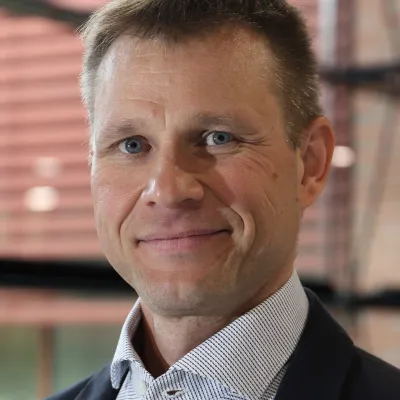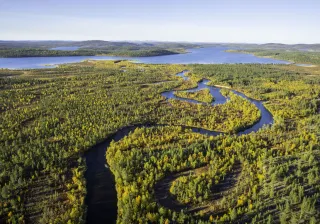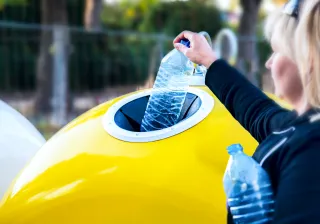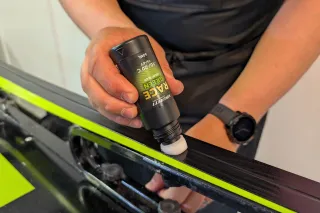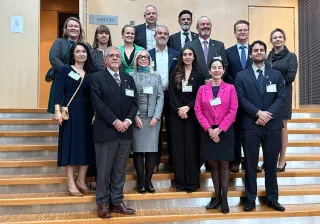Plastics are still needed for numerous purposes. However, to protect the environment, we need more efficient recycling and reuse systems for plastics, as well as new plastic replacing materials and high-quality bioplastics. The key is to find the right material for each purpose.
When used correctly and for the right purposes, plastics are a great material. From the carbon footprint point of view, it is better to package cold cuts in plastic wrapping helping to preserve them than to let any of the slices go bad.
However, if we want to have a sustainable future, we need to develop the recycling of plastics and make it more efficient. We also need to replace plastics made of fossil raw materials with bio-based and biodegradable materials.
Sustainability derives from the way materials are produced and used throughout their life cycle. Using environmentally friendly materials is not the only thing that matters – the production process and the suitability of each material for a specific purpose are also important.
So, there is no one and only solution that would fit every purpose. Recycled plastics, new materials and bio-based or biodegradable plastics all have a role to play. VTT has strong expertise in all of the above.
The recycling of plastics needs to be enhanced
It is possible to refine recycled plastics into high-quality material and, using chemical recycling methods for instance, make it as good as virgin feedstock. However, there is a lot of work to be done in the circular economy of plastics. In Finland, the recovery rate of deposit bottles is high, but in other respects the recovery of plastics still lags far behind the targets set for the coming years by the EU.
Proper sorting of plastic waste will play a crucial role. Therefore, we are exploring methods for pre-processing plastics and for identifying different plastic grades and potentially harmful additives. VTT has, for instance, developed equipment for pre-processing challenging waste streams. This will help in reprocessing plastic waste, but also serves as efficient pre-treatment for further recycling techniques.
We also have plenty of expertise in chemical recycling methods of plastics, such as pyrolysis and gasification. Chemical recycling, where large polymer molecules are broken into monomers, enables building a more extensive circular economy of plastics.
Among other things, we have chemically converted polystyrene back to styrene, the monomer from which polystyrene is made, reaching a degree of purity of above 99.9 per cent. Polystyrene is already being recycled, but at VTT we have also successfully removed the halogens often found in recycled feedstock. The use of petroleum-based polystyrene, such as expanded polystyrene (EPS) in the building sector and packages is still growing globally, and having it recycled is a major issue.
We need new kinds of materials
Thanks to their versatility, plastic materials are used almost everywhere: in goods, packaging, buildings, vehicles and electronics. Currently, a lot of bio-based materials are also being developed – their properties can equally be adapted to various uses.
One of the most versatile biomaterials is the natural polymer, cellulose, which we have used to develop, for example, packaging and textile materials. Cellulose-based fibres could replace materials like plastic-based synthetic textile fibres. VTT has also developed a technology which enables making nanocellulose out of wood pulp efficiently and at a low cost, to be used in coatings and composites, for example.
Another interesting area of research is the use of cellulose-based fibre foam as packaging, building and insulation material. The foam technology developed at VTT can be used for producing soft packaging materials setting in a particular shape or lightweight insulation materials.
Traditional plastics can be replaced with bioplastics
The term bioplastics can be used to refer to many kinds of products, which can be either bio-based or biodegradable or both. At VTT, we have been done extensive R&D on bioplastics.
To keep food safe and edible, foodstuff packaging must meet several requirements. We can produce bioplastics meeting such high performance requirements even from cellulose. Normally, cellulose lacks a property important for plastics used in packaging: thermoplasticity or becoming pliable in elevated temperatures. We have used a bio-based fatty acid to modify the cellulose fibre, thus making it thermoplastic and processable using existing plastic processing machinery. We have been testing the Thermocell plastic film with companies and come close to reaching the properties provided by polyethylene.
VTT has also developed a technology for making bio-based PEF plastic from pectin-containing agricultural waste, such as citrus peels. Packaging made of PEF protects foodstuffs even better than that made of PET plastic.

To reduce the disadvantages of plastics, the whole value chain must be taken into account. The key, however, is to know which material to choose for each application. All materials should be made recyclable or biodegradable by design. We must be able to produce high performance materials that can compete with plastics.
It is also essential to have functional collection and sorting systems and how profitable is to reuse recycled plastics. We have made various innovations in the sector, and we are making more progress all the time.
Jarmo Ropponen is the Vice President of Industrial Chemistry at VTT. If you are interested in developing plastics recycling, bio-based materials or replacing materials for plastics, feel free to contact us.
